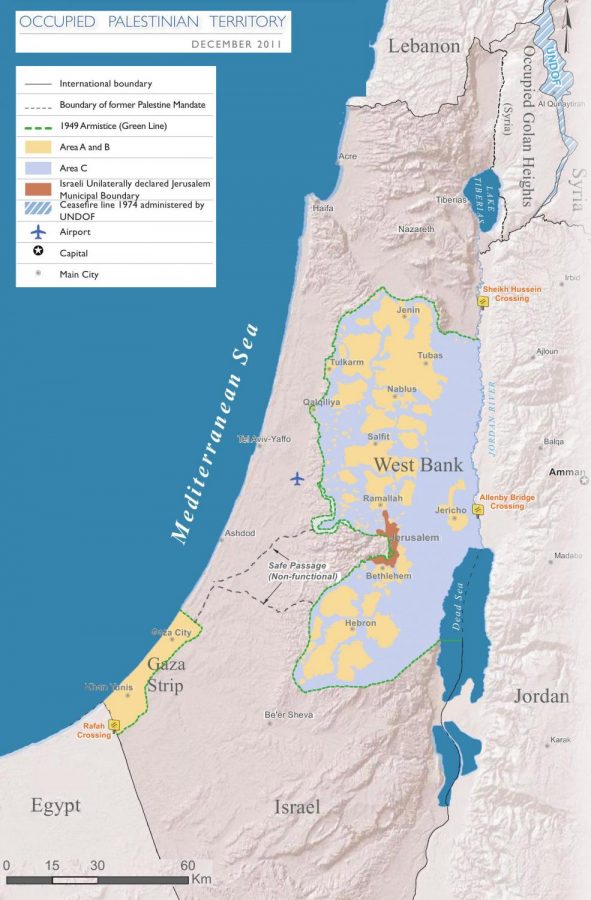Recent re-emergence of Israel and Palestine conflict and the tunnel vision created by social media
After years of silence, the Israeli-Palestinian conflict has reemerged and this time many people have taken to social media to spread awareness about this issue.
On May 10, Palestinians fired rockets into Israel after land disputes over the city of Jerusalem. According to a BBC article, “The fighting began after weeks of rising Israeli-Palestinian tension in occupied East Jerusalem that culminated in clashes at a holy site revered by both Muslims and Jews. Hamas, which controls Gaza, began firing rockets after warning Israel to withdraw from the site, triggering retaliatory airstrikes.”
Israel has an “iron dome” which is a technology that targets the rockets fired at them and blows them up before they can strike, so only 10 percent of all rockets fired actually hit Israel. However, Gaza does not have this protection, so more damage has been done there. There have been 219 deaths in Gaza and over 70 deaths in Israel.
Fortunately, a ceasefire was called May 21, but many doubt that this is the end to such a longstanding fight. A ceasefire is a temporary stoppage in war where both sides agree to withhold fighting or aggressive actions. It is a truce, but oftentimes, does not last. “There are these really rigid ideas about Jerusalem and settlement and Hamas,” said WHS Social Studies Teacher Brett Curtis. “It’s hard to see a political solution happening because there’s not a lot of wiggle room.”
Both Israelis and Palestinians believe they have the right to Jerusalem and do not want to compromise or share it. Despite the recent emergence of conflict, the tension between these two groups is nothing new. “The conflict has been going on for decades,” said WHS Social Studies Teacher Kimberly Leegan. “I would describe the conflict as an ancient one in which two peoples are both claiming the right to land that they each believe belongs to them.”
Rabbi Prosnit of Temple Emanuel said, “This conflict has been going on for a really long time. It’s hard to just look at the past 12 or 15 days in May because there’s really more to the conflict.” In 1948, the State of Israel was established when land was given out to create a Jewish state because many Jews felt unsafe after the Holocaust. This resulted in the first Arab-Israeli War. Israel won the war in 1949, but over 750,000 Palestinians were displaced and the territory was divided into three parts: the State of Israel, the West Bank and the Gaza Strip. The land which originally belonged to Jerusalem was taken over by Israel in 1967 during a six-day war. That six-day war was a small part of the conflict and only contributed to the long-lasting violence.
Social media has taken recent events and created tunnel vision surrounding the conflict. “To really understand the complexities we can’t just have soundbites, Tik Tok posts, Instagram posts or Facebook posts and say ‘I understand what’s happening,’” said Rabbi Prosnit.
Curtis added that “there’s a lot of misinformation and misconceptions that go out there about the general issues and it tends to be in the world of social media … ideas about the conflict that need further discussion.”
Social media is often called a highlight reel because it only portrays snippets of information without including a full discussion. During this conflict, social media has widely accelerated antisemitism in the United States. Leegan said, “We have begun to see how some people spread anti-Semitic language under the guise of critiquing Israeli foreign policy. That is why discussing this topic in the classroom is important so that students can learn about the history of the conflict as well as learn the difference between critiquing Israeli foreign policy and being anti-Semitic.”
Although there is now a ceasefire, there are still shots being taken on social media. This conflict calls into question what activism means and when it crosses a line with ignorance.

